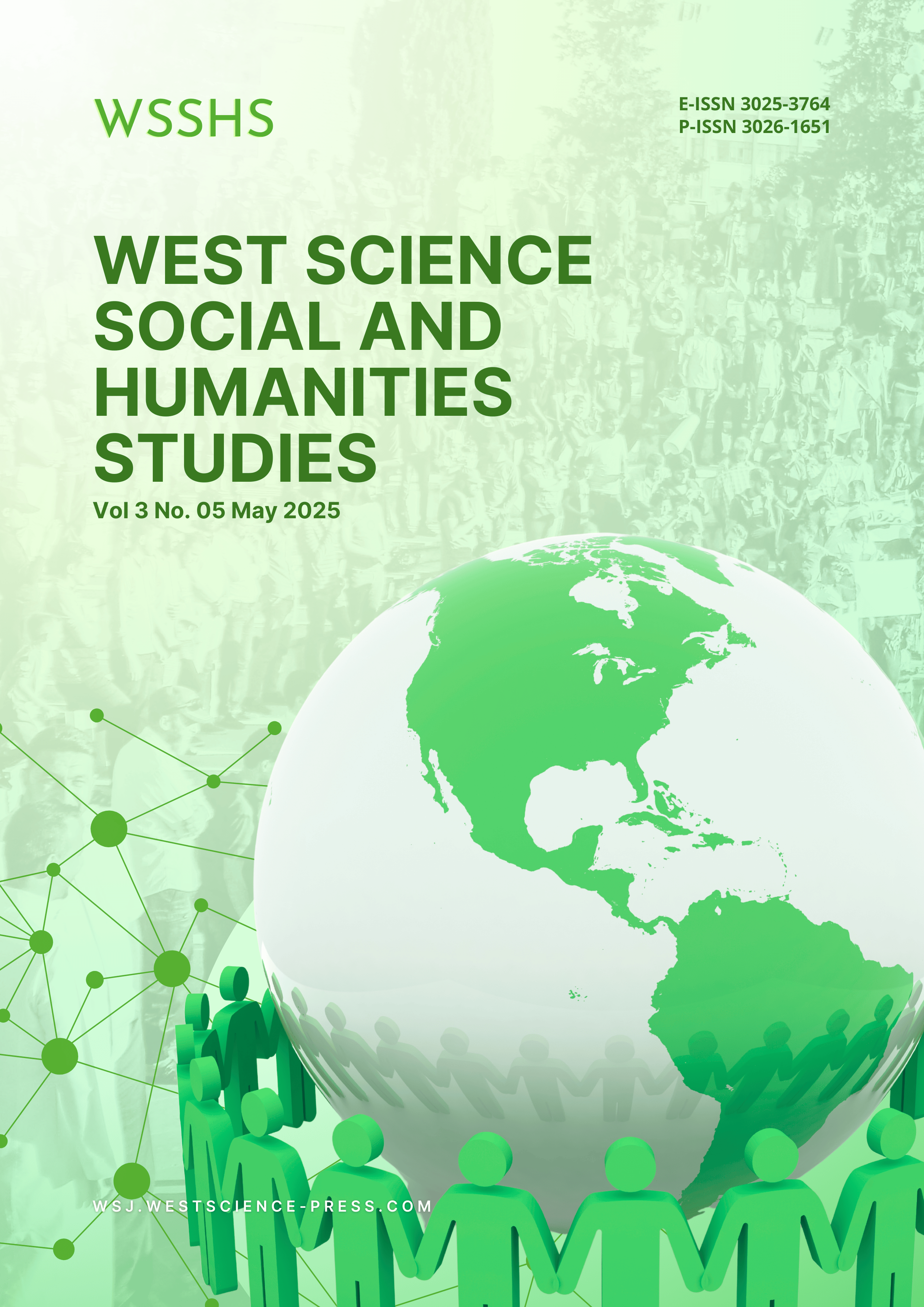A Bibliometric Analysis of the Evolution and Diffusion of Climate Finance Literature
DOI:
https://doi.org/10.58812/wsshs.v3i05.1917Keywords:
Climate Finance, Bibliometric Analysis, Climate Change, Green Bonds, VOSviewerAbstract
This study conducts a comprehensive bibliometric analysis to examine the intellectual structure, evolution, and diffusion of climate finance literature from 2000 to 2024. Drawing data from the Scopus database, the study applies co-authorship, citation, keyword co-occurrence, and country collaboration analyses using VOSviewer. The findings reveal that climate finance and climate change are central themes, anchoring an interdisciplinary knowledge network that encompasses economic, policy, justice, and innovation-related subfields. Temporal analysis shows a progression from early focus on emissions and treaties toward recent interest in green bonds, financial innovation, and climate risk. Key contributors and collaborative hubs are identified, with the United Kingdom, United States, and Germany emerging as dominant producers of climate finance scholarship. Despite growing global interest, the analysis highlights regional imbalances in research production and calls for more inclusive, equitable academic collaboration. This study provides valuable insights for future research and policy formulation by mapping the trajectory and scope of the climate finance discourse.
References
[1] S. Giglio, B. Kelly, and J. Stroebel, “Climate finance,” Annu. Rev. Financ. Econ., vol. 13, no. 1, pp. 15–36, 2021.
[2] H. Hong, G. A. Karolyi, and J. A. Scheinkman, “Climate finance,” Rev. Financ. Stud., vol. 33, no. 3, pp. 1011–1023, 2020.
[3] R. R. Bhandary, K. S. Gallagher, and F. Zhang, “Climate finance policy in practice: A review of the evidence,” Clim. Policy, vol. 21, no. 4, pp. 529–545, 2021.
[4] J. Stroebel and J. Wurgler, “What do you think about climate finance?,” Journal of Financial Economics, vol. 142, no. 2. Elsevier, pp. 487–498, 2021.
[5] B. Buchner et al., “Global landscape of climate finance 2019,” Clim. Policy Initiat., vol. 32, no. 1, pp. 1–38, 2014.
[6] S. Long, B. Lucey, S. Kumar, D. Zhang, and Z. Zhang, “Climate finance: What we know and what we should know?,” J. Clim. Financ., vol. 1, p. 100005, 2022.
[7] N. Donthu, S. Kumar, D. Mukherjee, N. Pandey, and W. M. Lim, “How to conduct a bibliometric analysis: An overview and guidelines,” J. Bus. Res., vol. 133, pp. 285–296, 2021.
[8] P. Dolan, M. Hallsworth, D. Halpern, D. King, R. Metcalfe, and I. Vlaev, “Influencing behaviour: The mindspace way,” J. Econ. Psychol., vol. 33, no. 1, pp. 264–277, 2012.
[9] D. Zhang, Z. Zhang, and S. Managi, “A bibliometric analysis on green finance: Current status, development, and future directions,” Financ. Res. Lett., vol. 29, pp. 425–430, 2019.
[10] U. Grote, A. Fasse, T. T. Nguyen, and O. Erenstein, “Food security and the dynamics of wheat and maize value chains in Africa and Asia,” Front. Sustain. Food Syst., vol. 4, p. 617009, 2021.
[11] T. T. Nguyen, T. A. T. Pham, and H. T. X. Tram, “Role of information and communication technologies and innovation in driving carbon emissions and economic growth in selected G-20 countries,” J. Environ. Manage., vol. 261, p. 110162, 2020.
[12] L. Wang, X. V. Vo, M. Shahbaz, and A. Ak, “Globalization and carbon emissions: is there any role of agriculture value-added, financial development, and natural resource rent in the aftermath of COP21?,” J. Environ. Manage., vol. 268, p. 110712, 2020.
[13] G. Mutezo and J. Mulopo, “A review of Africa’s transition from fossil fuels to renewable energy using circular economy principles,” Renew. Sustain. Energy Rev., vol. 137, p. 110609, 2021.
[14] F. Polzin, F. Egli, B. Steffen, and T. S. Schmidt, “How do policies mobilize private finance for renewable energy?—A systematic review with an investor perspective,” Appl. Energy, vol. 236, pp. 1249–1268, 2019.
[15] G. Semieniuk, E. Campiglio, J. Mercure, U. Volz, and N. R. Edwards, “Low‐carbon transition risks for finance,” Wiley Interdiscip. Rev. Clim. Chang., vol. 12, no. 1, p. e678, 2021.
[16] C. Schoelzel and P. Friederichs, “Multivariate non-normally distributed random variables in climate research–introduction to the copula approach,” Nonlinear Process. Geophys., vol. 15, no. 5, pp. 761–772, 2008.
Downloads
Published
Issue
Section
License
Copyright (c) 2025 Loso Judijanto, Desi Putri Dama, Tera Lesmana

This work is licensed under a Creative Commons Attribution-ShareAlike 4.0 International License.




















 Instagram
Instagram 